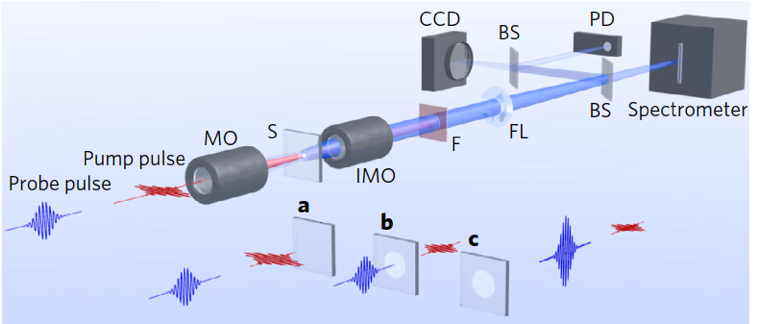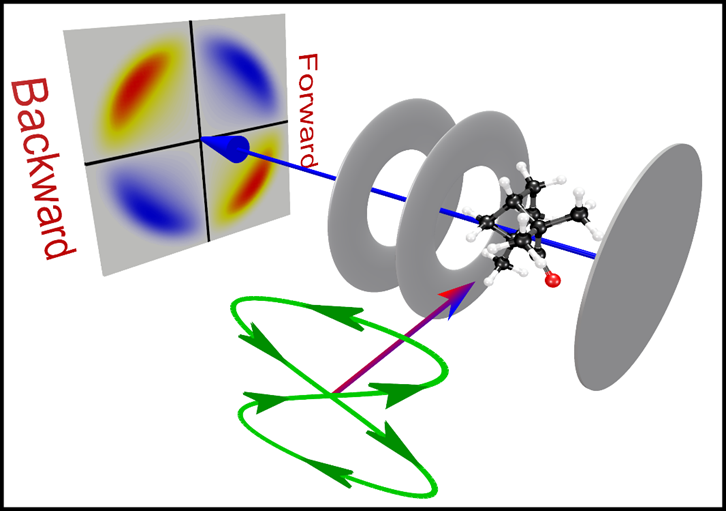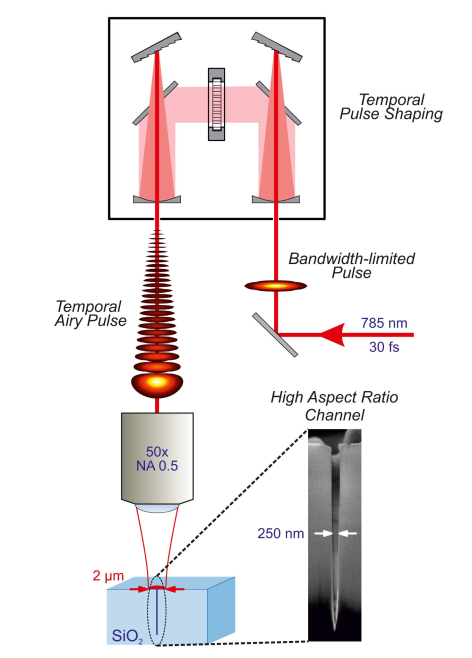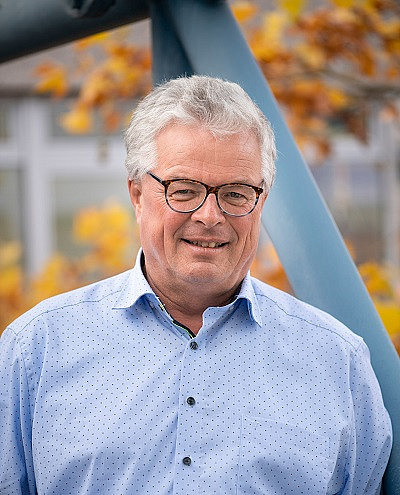Femtosecond and Ultrafast Laser Control
"Laser amplification in excited dielectrics"
T. Winkler, L. Haahr-Lillevang, C. Sarpe, B. Zielinski, N. Götte, A. Senftleben, P. Balling and T. Baumert; Nature physics, 2018, 14, 74 – 79
Wide-bandgap dielectrics such as glasses or water are transparent at visible and infrared wavelengths. This changes when they are exposed to ultrashort and highly intense laser pulses. Different interaction mechanisms lead to the appearance of various transient nonlinear optical phenomena.

Using these, the optical properties of dielectrics can be controlled from the transparent to the metal-like state. Here we expand this range by a yet unexplored mechanism in excited dielectrics: amplification. In a two-color pump–probe experiment, we show that a 400 nm femtosecond laser pulse is coherently amplified inside an excited sapphire sample on a scale of a few micrometers. Simulations strongly support the proposed two-photon stimulated emission process, which is temporally and spatially controllable. Consequently, we expect applications in all fields that demand strongly localized amplification.
"Photoelectron Circular Dichroism with Two Overlapping Laser Pulses of Carrier Frequencies ω and 2ω Linearly Polarized in Two Mutually Orthogonal Directions" P. V. Demekhin, A. N. Artemyev, A. Kastner and T. Baumert; Physical Review Letters, 2018, 121, 253201 (6pp)
Until now, circularly polarized light was essential to detect chiro-optical effects. Prominent examples are the traditional circular dichroism in absorption and photoelectron circular dichroism resulting from ionization of chiral molecules. Here, we show that chiro-optical effects can also be triggered by a laser field consisting of carrier frequencies and 2 linearly polarized in two mutually orthogonal directions. These fields can be tailored in such a way, that the resulting electric field vector mimics rotational motion in different directions perpendicular to the propagation of the laser.

Our simulations show a sizable forward/backward asymmetry in the photoelectron angular emission distribution, which depends on the handedness of a chiral molecule and the rotational direction of the field. We propose that the effect of such rotationally tailored fields does not rely on the photon-electron angular momentum transfer, as is the case in conventional chiro-optical effects. Nowadays, such bichromatic fields can be generated in many experimental laboratories in the optical and even XUV regimes and experimental verifications of this new scheme are expected in the near future.
"Temporal Airy pulses for controlled high aspect ratio nanomachining of dielectrics"
N. Götte, T. Winkler, T. Meinl, T. Kusserow, B. Zielinski, C. Sarpe, A. Senftleben, H. Hillmer and T. Baumert; Optica, 2016, 3 (4), 389 – 395
Understanding the interplay between optical pulse parameters and ultrafast material response is critical in achieving efficient and controlled laser nanomachining. In general, the key to initiate material processing is the deposition of a sufficient energy density within the electronic system. In dielectrics this critical energy density corresponds typically to a plasma frequency in the near-IR spectral region. Creating this density instantaneously with ultrashort laser pulses of a few tens of femtoseconds pulse duration in the same spectral region, the penetration depth into the material will strongly decrease with increasing electron density. Consequently, staying below this critical density will allow deep penetration depths. This calls for delayed ionization processes to deposit the energy for processing, thus introducing the temporal structure of the laser pulses as a control parameter. In this contribution we demonstrate this concept experimentally and substantiate the physical picture with numerical calculations.

Bandwidth-limited pulses of 30 fs pulse duration are stretched up to 1.5 ps either temporally symmetrically or temporally asymmetrically. The interplay between pulse structure and material response is optimally exploited by the asymmetrically structured temporal Airy pulses leading to the inherently efficient creation of high aspect ratio nanochannels. Depths in the range of several micrometers and diameters around 250 nm are created within a single laser shot and without making use of self-focusing and filamentation processes. In addition to the machining of nanophotonic devices in dielectrics, the technique has the potential to enhance laser-based nanocell surgery and cell poration techniques.
Contact
Prof. Dr. Thomas Baumert
full member

- Telephone
- +49 561 804-4452
- baumert[at]physik.uni-kassel[dot]de
- Location
- Universität Kassel
Fachbereich 10 - Naturwissenschaften & Mathematik
Institut für Physik
Heinrich-Plett-Straße 40
34132 Kassel
- Room
- 1128
